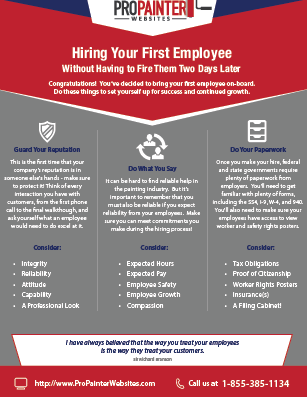The Influence Of Weather On Industrial Exterior Painting: Trick Insights For Your Factor To Consider
The Influence Of Weather On Industrial Exterior Painting: Trick Insights For Your Factor To Consider
Blog Article
Produced By-Conway Duke
When you're planning an industrial outside painting job, do not take too lightly the effect of weather on your results. You require to take into consideration aspects like temperature, moisture, and precipitation, as they can make or break your paint work. For example, did you understand that suitable problems ask for details temperature varieties and humidity levels? Failing to keep an eye on these elements can cause uneven finishes and even damages to fresh paint. Recognizing these elements is essential to attaining a resilient, specialist result. So, what certain weather conditions should you be wary of?
Temperature Considerations
When it involves commercial exterior paint, temperature plays an essential function in the end result of your project. If you're painting in severe heat, the paint can dry out too rapidly, leading to problems like poor bond and uneven finishes. You want to go for temperatures in between 50 ° F and 85 ° F for the very best results. Listed below 50 ° F, paint might not cure correctly, while over 85 ° F, you risk blistering and cracking.
Timing your project with the ideal temperature levels is crucial. Beginning your job early in the early morning or later in the mid-day when it's cooler, especially throughout warm months.
Additionally, consider the surface area temperature; it can be dramatically higher than the air temperature, especially on warm days. Use a surface thermometer to check this before you start.
If temperature levels are unforeseeable, watch on the weather prediction. Unexpected temperature decreases or heat waves can thwart your strategies. You don't want to begin repainting just to have the problems alter mid-project.
Moisture Levels
Humidity degrees considerably impact the success of your commercial external painting task. When the humidity is too expensive, it can impede paint drying out and curing, resulting in a variety of concerns like inadequate attachment and end up top quality.
If you're planning a task during damp conditions, you may locate that the paint takes longer to completely dry, which can extend your task timeline and rise costs.
Conversely, reduced humidity can also present difficulties. Paint may dry also rapidly, protecting against correct application and leading to an uneven surface.
You'll intend to keep track of the moisture levels closely to ensure you're functioning within the excellent variety, usually between 40% and 70%.
To get the best outcomes, think about making use of a hygrometer to determine moisture before beginning your job.
If you discover the degrees are outside the optimal range, you may need to adjust your routine or pick paints developed for variable conditions.
Always get in touch with the producer's standards for certain recommendations on moisture tolerance.
Precipitation Effect
Rain or snow can considerably interrupt your commercial exterior paint strategies. When precipitation takes place, it can get rid of freshly used paint or produce an uneven finish. Preferably, https://archziner.com/home/7-good-reasons-to-paint-your-home-walls-white/ wish to choose days with dry weather condition to ensure the paint sticks properly and remedies effectively. If please click the next internet page captured in a shower, it's ideal to stop the project and wait on conditions to improve.
Moreover, snow can be much more destructive. Not just does it create a wet surface area, yet it can likewise lower temperatures, making it difficult for paint to completely dry. This can cause concerns like peeling off or blistering down the line.
It's crucial to check the weather forecast prior to starting your project. If rainfall or snow is forecasted, think about rescheduling.
Constantly keep in mind to enable sufficient drying time in between layers, particularly if the weather condition stays unpredictable.
Conclusion
In conclusion, keeping an eye on the weather condition is necessary for an effective business external paint task. By monitoring temperature, humidity, and precipitation, you can guarantee the very best conditions for application and healing. Remember to prepare your work around positive weather and always follow producer standards. With the best technique, you'll achieve a long-lasting, beautiful coating that can hold up against the aspects. Don't let the climate catch you off-guard-- remain notified and repaint clever!
